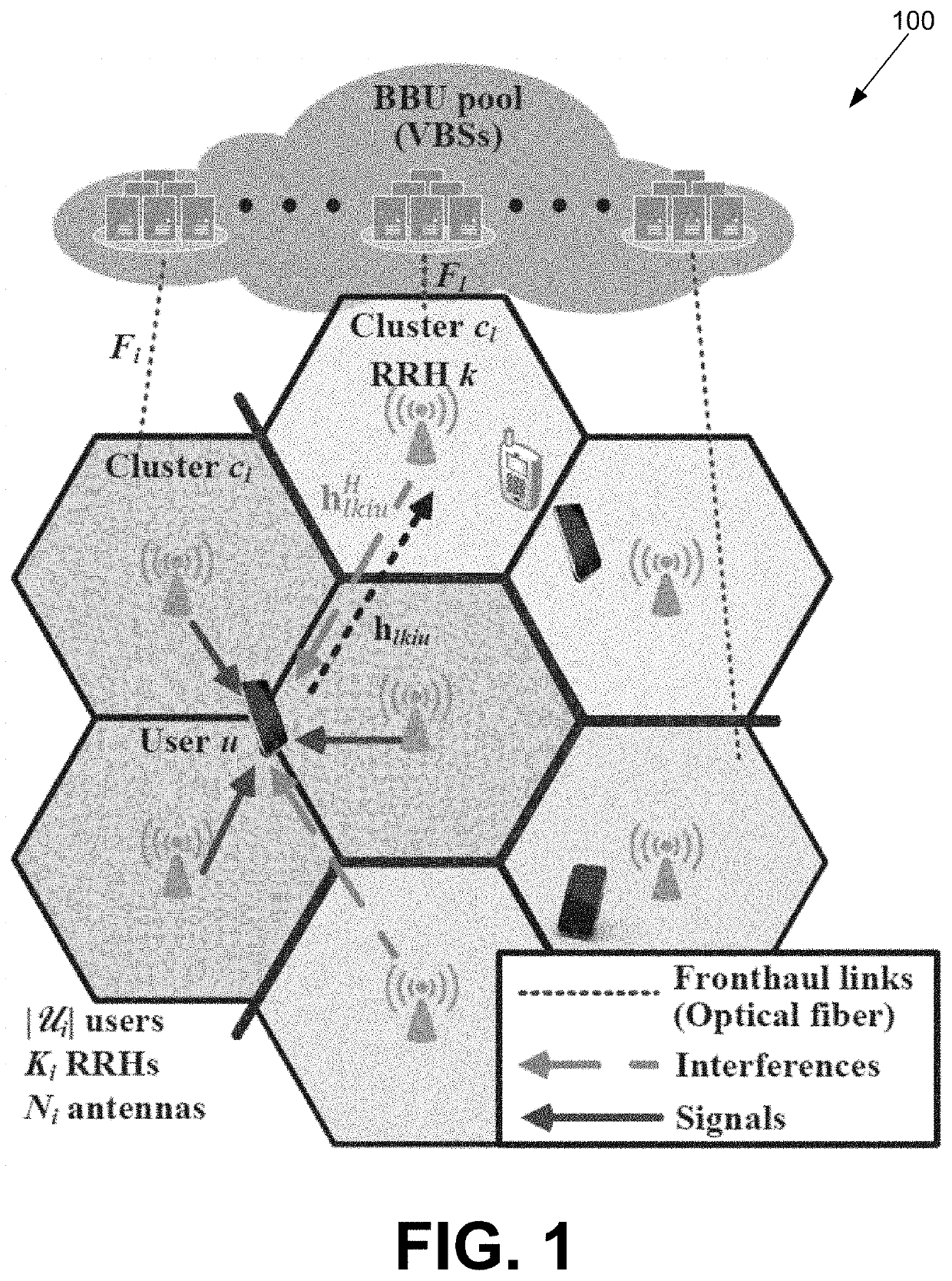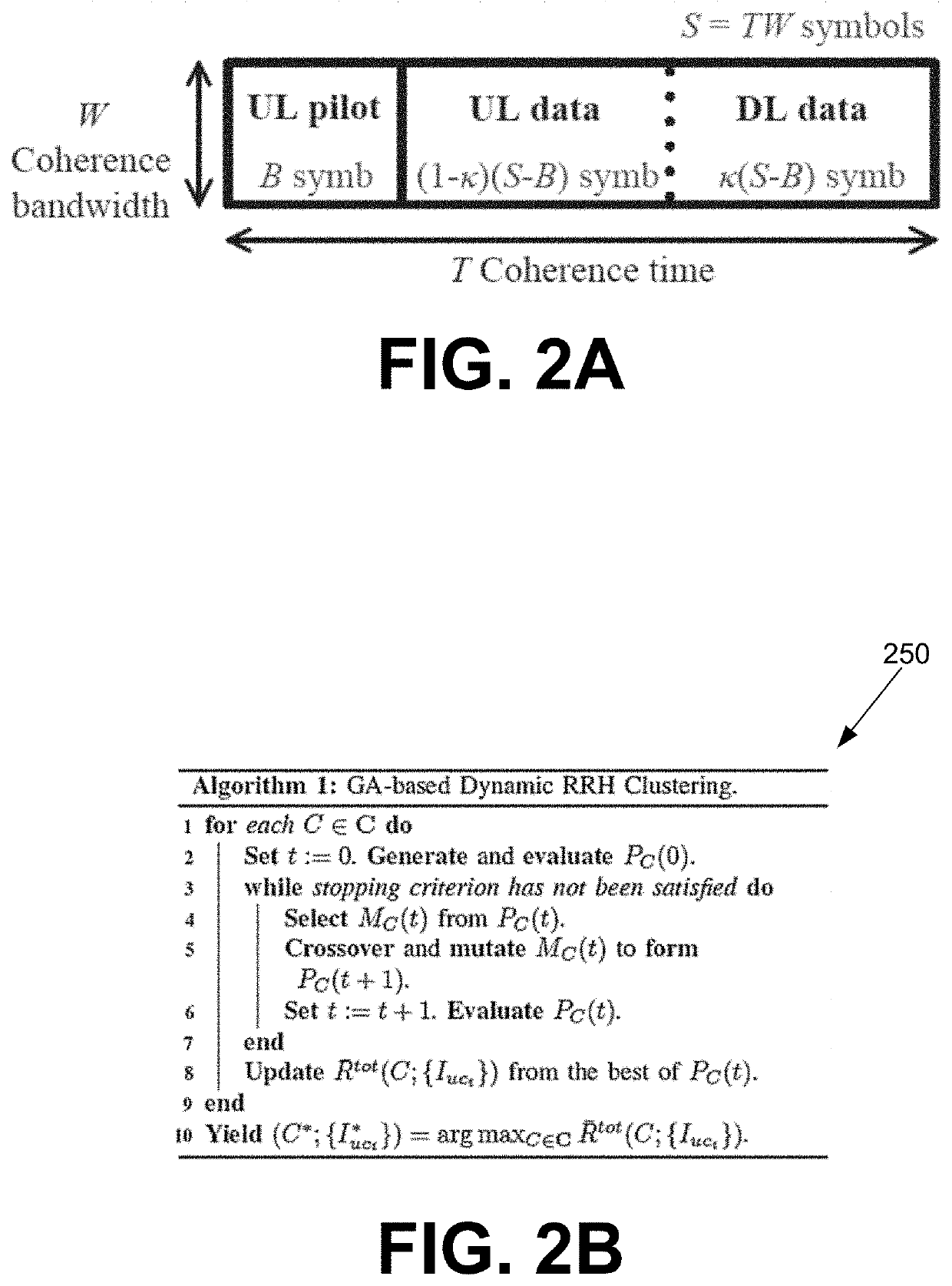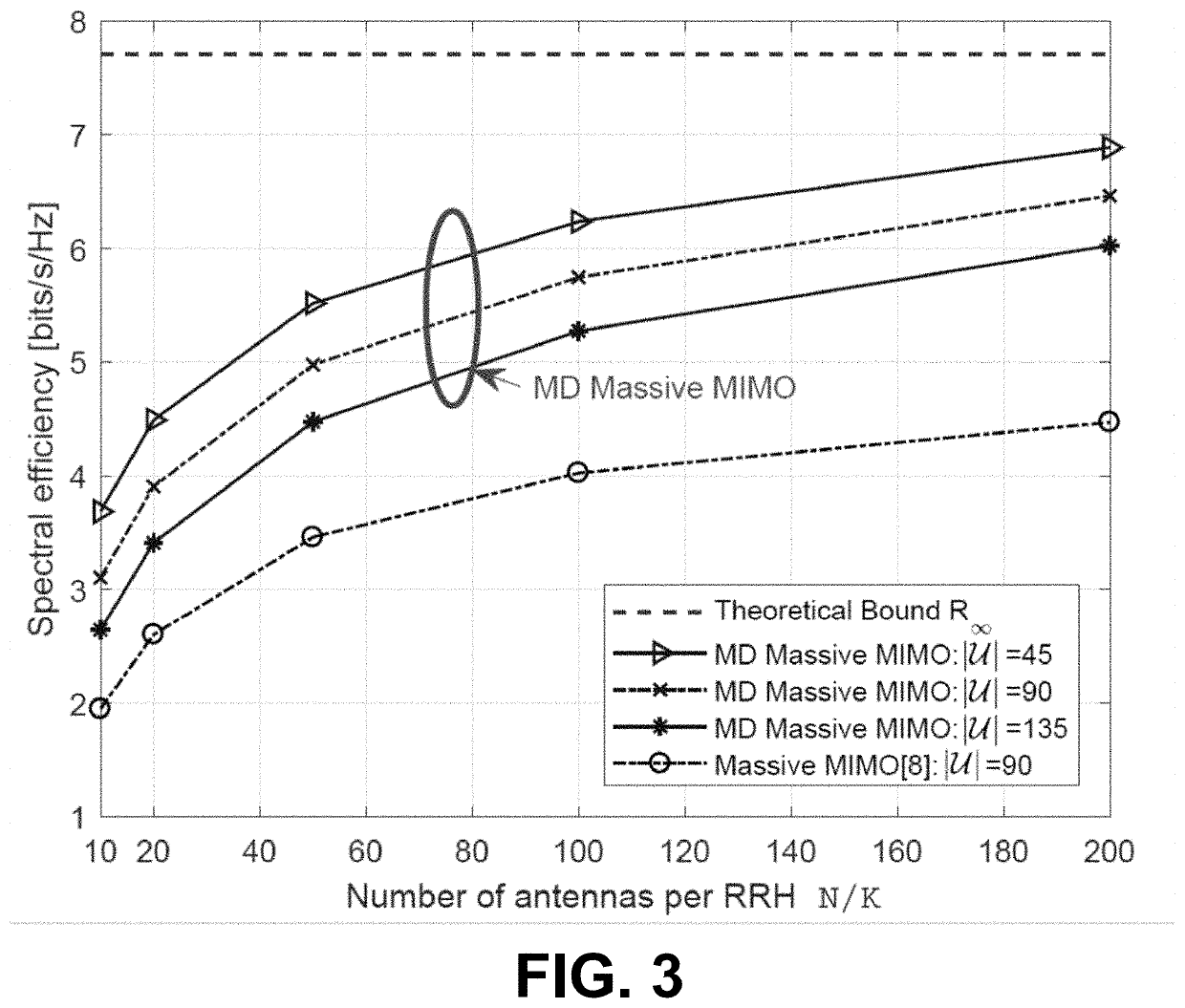Software-defined massive multi-input multi-output (MIMO)
- Summary
- Abstract
- Description
- Claims
- Application Information
AI Technical Summary
Benefits of technology
Problems solved by technology
Method used
Image
Examples
Embodiment Construction
[0012]Disclosed herein are various examples related to providing a spectrally efficient communication network using clustered devices and virtualized resources in a massive multi-input multi-output (MIMO) environment. Massive MIMO can include a base station or transmitter side resource, for example, that utilizes more than eight antennas (and sometimes as many as 128, 256, or more), and can also include user equipment devices (UEs) that utilize around eight antennas. Availability of massive channel state information (CSI) at the transmitter side as well as co-channel interference from aggressive reuse greatly limit the spectral efficiency of massive MIMO such as when used as an enabling technology in a 5G and beyond (5G&B) communication network. Software-defined networking can minimize some of these drawbacks (e.g., by virtualizing resources, providing centralized control, or facilitating the implementation and aggregation of virtual base stations (VBSs) at the central base band uni...
PUM
 Login to View More
Login to View More Abstract
Description
Claims
Application Information
 Login to View More
Login to View More - R&D
- Intellectual Property
- Life Sciences
- Materials
- Tech Scout
- Unparalleled Data Quality
- Higher Quality Content
- 60% Fewer Hallucinations
Browse by: Latest US Patents, China's latest patents, Technical Efficacy Thesaurus, Application Domain, Technology Topic, Popular Technical Reports.
© 2025 PatSnap. All rights reserved.Legal|Privacy policy|Modern Slavery Act Transparency Statement|Sitemap|About US| Contact US: help@patsnap.com



